Gutters
Gutters take the rain from your roof and channel it away from your walls and the timbers set into the walls that are prone to rot if they are damp – lintels, joists and rafters. As our winters get wetter, it is very important that your gutters function properly. Cleaning will prevent overflows and regular maintenance will prevent leaks. Gutter repairs are almost always common repairs.
What to look out for
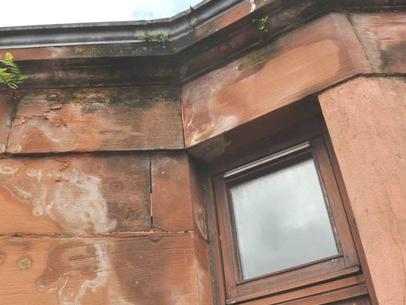
Keep a regular eye on the gutters looking particularly for damp and stains underneath as these can be the first sign of leaks and overflows. Cracks in lintels underneath are sometimes the result of rot problems inside.
Quick action can prevent further damage to your decorations and the structure of your building.
Cleaning gutters
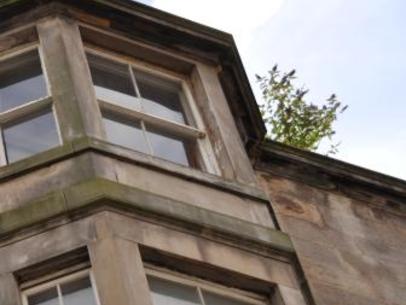
Leaves and roof debris clog gutters. Clean your gutters every year, if there are trees nearby in spring and autumn. Cleaning once every two years may be possible depending on the gutter. Plants growing in gutters are a sure sign of problems.
Consider fitting a leaf guard over the outlet to the downpipe to help prevent blockages in the pipe but keep the guards themselves clean. Leafguards at outlets can also cause blockages as leaves will often collect around the wire cage and cause a blockage.
Dealing with climate change
As our winters get ever wetter with more frequent rain storms, gutter maintenance becomes even more critical. If you are replacing your gutters, increase their size so they can cope with more rain and add an undercloak to protect against rainstorms.
Types of gutter
Moulded front gutter
Usually made of cast iron and commonly found on the fronts of older stone tenements.
Half-round gutter
Widely used on the rear of older stone tenements and at front and rear of newer buildings.
Stone gutters
Also widely used on the front of stone buildings - leaks can be hard to spot until too late.
Parapet gutters
Hidden behind a low stone wall at the top of your building, leaks are difficult to spot until its too late.
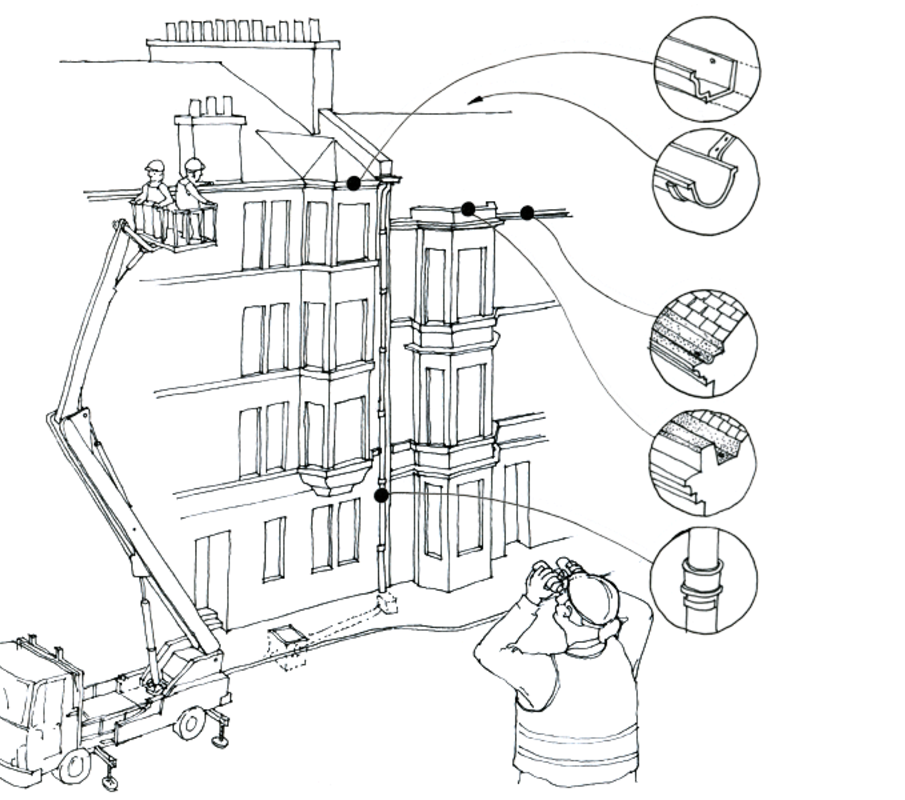
Moulded front gutter
Cast iron gutters and the bolts that fix the joints in sections can rust and corrode. Hard to check from ground level.
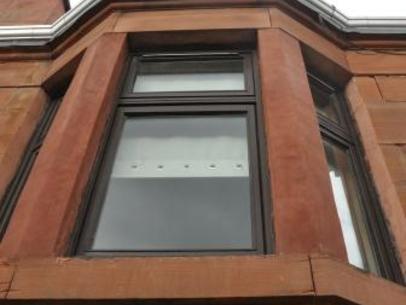
Half-round gutter
These are normally made of cast iron. If they rust, they leak so paint them every five years - inside and out. Look out for corrosion problems at the joints between gutter lengths too.
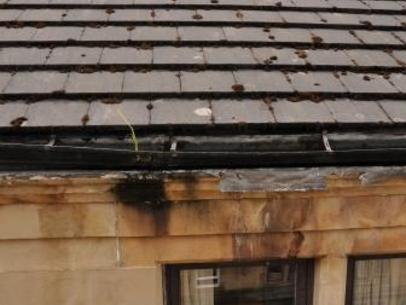
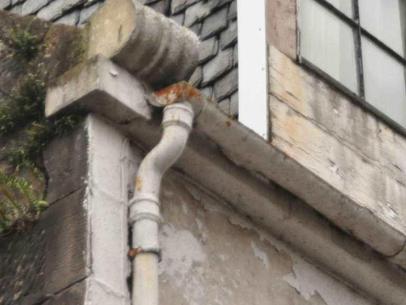
Stone gutter
Sometimes called eaves gutters, these are simply a channel in a top cornice stone. The channel would be lined with lead or asphalt. As these gutters are hidden, leaks can go undetected until it’s too late. These gutters are often too shallow to cope with rainstorms.
Parapet gutter
Parapets have a gutter hidden behind them, normally made of lead. Any blockage can lead to problems, particularly in rainstorms. They should have a secondary safety overflow outlet. They are most likely to block at the connection with the drainpipe. The drain may be an internal pipe.
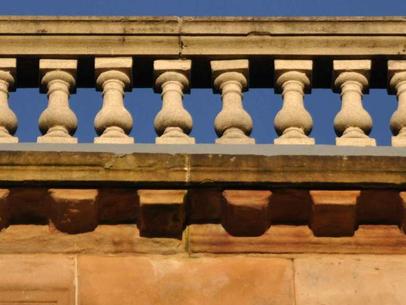
Listed buildings and conservation areas
If your building is listed or in a conservation area, you may need consent to replace your gutters with those made of an alternative materials.
Who pays?
Gutter repairs are almost always common repairs. Replacing gutters with those of a higher specification to cope with climate change is an incidental improvement and therefore maintenance so does not need 100% agreement of owners.
Further information